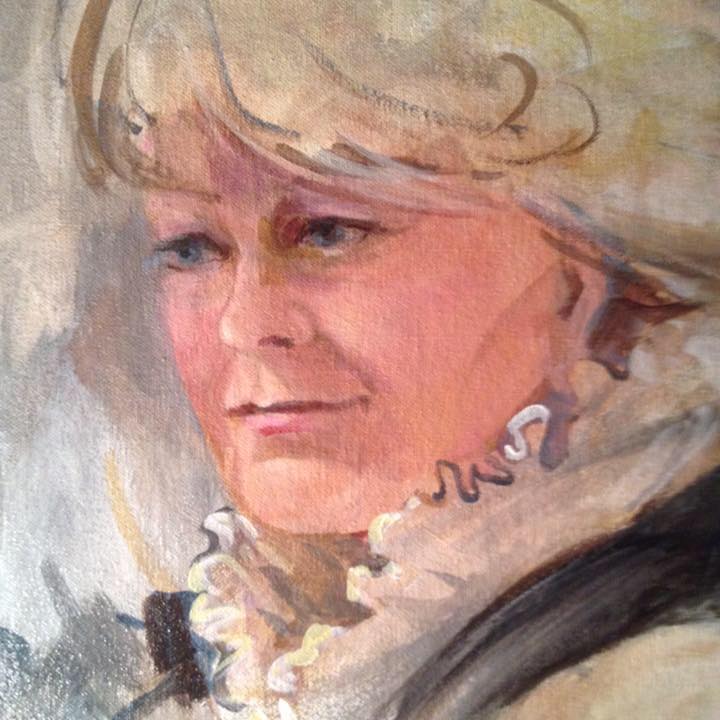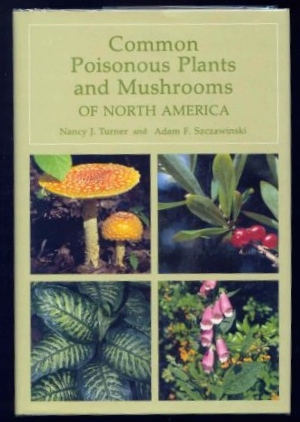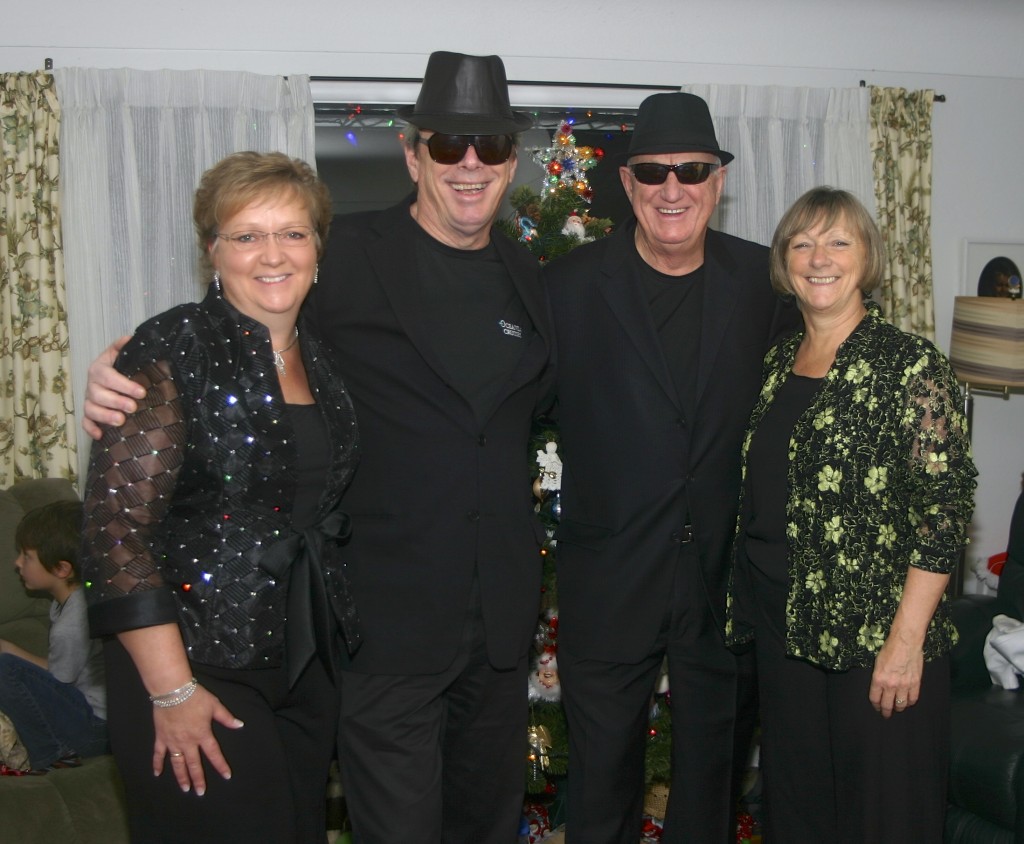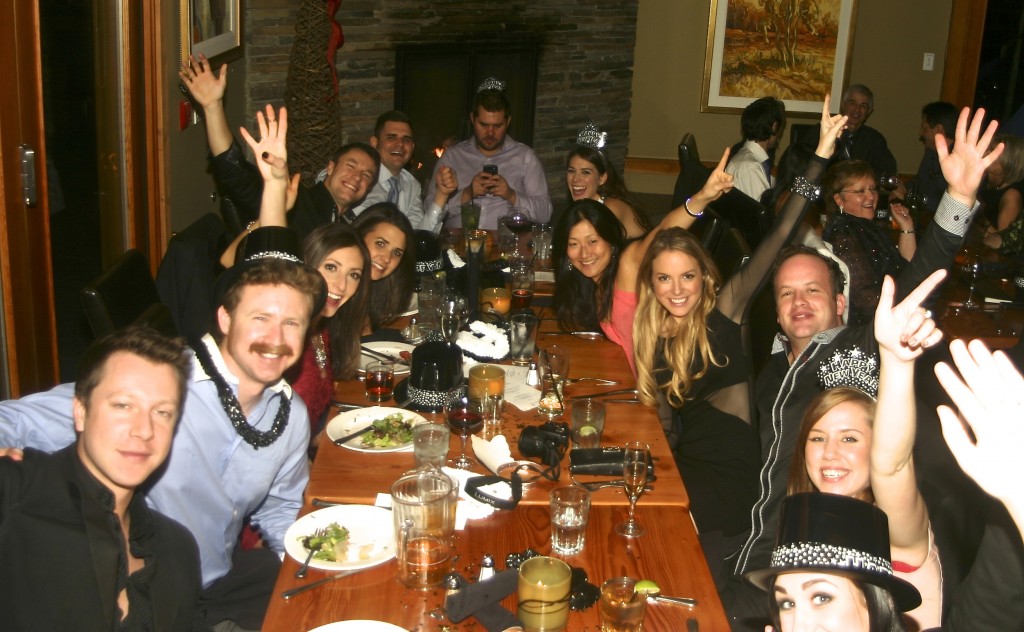Posts Tagged ‘Bjorn Simonsen’
Happy 70th Linda Simonsen
A Favourite Painting of Linda
A very happy birthday to our longtime friend Linda Simonsen as she now joins those of us who now occupy that amazing seventh decade of our lives. It is a time to reflect upon all the good times we have shared with those who have been near and dear to us over the past several decades. (A Video Link is provided in the footer)
To provide a little perspective on how things have changed since Linda landed at her parents home in 1947, have a peek at the cost of a few key items as well as a few of the major events that took place in Canada in that year.
Average Cost of new home, $6,600.00
Average wage per year, $2,850.00
Cost of a gallon of gas, 15 cents
Average cost of a new car, $1,300.00
A loaf of Bread, 13 cents
A Man’s Sweater, $8.50
Bulova Watch, $52.50
Two cans of Heinz Cream of Tomato Soup, 23 cents
Leg O Lamb, 59 cents/pound
Loaf Marvel Enriched Bread, 13 cents
Dozen Oranges, 49 cents
And a few events that made the news in that same year.
January 1 – Canadian Citizenship Act 1946 comes into effect.
January 2 – Dominion of Newfoundland (later a province in 1949) switches to driving on the right from the left.
January 27 – The cabinet order deporting Japanese-Canadians to Japan is repealed after widespread protests.
February 13 – Oil is discovered near Leduc, Alberta.
May 14 – The Chinese Immigration Act of 1923 is repealed.
June 15 – The laws limiting Asian immigration to Canada are repealed; Canadians of Asian descent are allowed to vote in federal elections.
July 22 – Two new nuclear reactors go online at the Chalk River research facility.
September 30 – The last group of personnel who had been on active service, for World War II, since September 1, 1939, stood down.[1]
October 1 – New letters patent defining the office and powers of the governor general come into effect.
December 29 – Boss Johnson becomes premier of British Columbia.
Stephen Leacock Award: Harry L. Symons, Ojibway Melody.
The Federal law was changed such that Canadian women no longer lost their citizenship automatically if they married non-Canadians.
Now, sit back, take a few minutes to listen and watch as a few snippets of Linda’s life flow by as Joan Baez sings Forever Young, Louis Armstrong, What a Wonderful World, and Randy Newman, You’ve Got a Friend in Me.
(190)
Blue Tones Top the Charts
Get a Job – The Blue Tones
(The slideshow is in HD, so you may need to pause for 15 seconds while it uploads.)
A full series of still photos from this video can be accessed at:
McNeill Life Stories Facebook Page
Lead Singer and Saxophone Player: Art Charlton
Backup Singers: Alana Charlton, Linda and Bjorn Simonsen; Lynn and Harold McNeill;
Clair Langford and Tom
Practice Backup Singers: Benji and Kevin Charlton; Erika and Kia Simonsen,
Daphne and Danny Langford; Jay, Kari and Christine McNeill
Years of Struggle: The Back Story
After years of struggle, a British Columbia band from Victoria, the Blue Tones, knew it was do or die as they concentrated on putting the finishing touches to their song “Get a Job”.
The lyrics came straight from the heart as the four men knew that the women who had backed them for so long wanted more stability in their lives and if that meant the men had to give up their guitars, saxophones and rakish style for more menial work and a regular pay cheque, so be it.
Then came their big chance, back in early 1980’s, when a spot opened in Canada’s “So You Think You’ve Got Talent.” TV show. Another little known band “Lips Inc.” best know for their 1980 hit Funkytown failed to show for the taping of the show when another of those freakish July blizzards hit their hometown in Saskatoon, Saskatchewan. The Blue Tones were on standby and asked to step in. The rest is history.
Two months later Get a Job topped the charts in both Canada and the US. The attached video is a composite of the band’s work during the time they wrote and practised the song, then presented on the talent show. As you can see in the video, every one of their family members participated in getting it just right. Now you know the rest of the story.
We hope you enjoy this video of our first Golden Hit.
Harold
(143)
The Magical Gardens of Adam F. Szczawinski
This post began as a short story about one man, our neighbour, Adam Szczawinski, the co-author of the above book and of several others he wrote during his illustrious career as a botanist. Adam’s story stretches from early in last century to the present day and is a story that seeks to provide reasons why the people of Canada, indeed of all countries, should care rather than hate, should help rather than reject.
Note: August 18, 2019: I hope many of you who start this post will read to the end, as Adam, the subject of this story, became a member of the Polish Squadron during the Battle of Britian. The men distinquished themselves throughout the war. A movie, Mission of Honour, followed the transition of Squadron 303 in Britain. Netflix Movie about the 303 Squadron
Introduction (Note: this is also the introduction posted on Facebook)
I began writing this, the third part of the Magical Gardens series, at a time when Canada had just entered what has become one of the most divisive, hate-filled elections I have witnessed in recent decades. While in previous elections the parties were unrelenting in their attacks on each other, in this election one party, in particular, choose to single out an ethnic group and a religion as the subject of their wrath. It did not take long before hate-filled invective became commonplace in newspapers, on T.V., radio and, in particular, in social media.
After having finished two light-hearted chapters about our immediate neighbour, a widower whose wife had passed away in the 1960’s and he in 2006, I became interested in finding out more about his early life. It did not take long to learn Adam was from a race and religion that became one of the most reviled in of the 20th Century, not only in Europe but also around the world.
It was a history that brought into stark relief a comparison with that which is happening around the world today with another race and religion. I hope you will find the time to work your way through to the end of this story as Adam’s story is a story “about all men and women who, because of war, famine, natural disaster, or bigotry, racism and hatred, are forced to flee their home and country for the safety of another.”
Regards, Harold
A Photo Album is now attached to this post: The Story of Adam
Link to Photos of a few of Adams Plants
Part 1: A Magical Summer
Link to Full Photo Series of Part 1
Part 2: Link to Crackling Fire on Cold Winters Day
The Story of the Polish Free Airforce in Britain
Mission of Honour – Netflix Movie about the 303 Squadron
1. A Friendly Face, a Gentle Smile
When Lynn, Jay, Sean and I moved to Leney Place in the early 1990’s, the one-acre property immediately across the street from our own was filled with all manner of native plants, shrubs and trees. The owner, a widower, had, as far as we knew, lived alone on the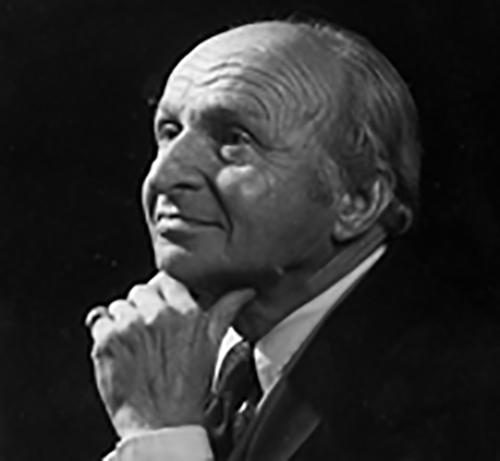 property for at least two decades before we arrived. He was a quiet, friendly man whose love of plants was evident and while we didn’t see him often, whenever we did he was always friendly and helpful.
property for at least two decades before we arrived. He was a quiet, friendly man whose love of plants was evident and while we didn’t see him often, whenever we did he was always friendly and helpful.
Web (undated Photo). Dr. Adam Szczawinski. Take a moment to reflect upon this man’s face and think about what is hidden in his past that should give us all pause to remember. I knew nothing about his early life when I wrote the first two chapters of this post.
Our family learned a little more about his past when, a few years after we arrived on Leney Place in Royal Oak, our older son Jay came home one day all excited, telling us the man next door gave him a book on Poisonous Plants and Mushrooms. The book was only published in 1991, so Adam, who autographed the book for Jay, was clearly a busy man when he wasn’t working in his garden. Those who know Jay will understand that books such as the one above are near and dear to his heart and Adam seemed like the gentle, caring sort who would gladly spend hours answering the dozens of questions Jay might ask.
The author, of course, was none other than Dr. Adam Szczawinski, a renowned botanist who, we only learned recently, had written dozens of books, some of which became the “to go” to source for all manner of information about plants native to Vancouver Island and Western North America.
At the time we became neighbours, Adam had long since retired and while we occasionally talked about plants and other neighbourhood interests, we never knew much about his past other than learning a bit more about his botanical expertise and that for years into his retirement he was much in demand as a lecturer and writer. As Adam grew older and weaker, the immediate neighbours kept a watchful eye out for him as he continued to live on his own.
One hot summers day when Sean, our youngest son was ten or twelve, he and I were playing in the yard when Sean heard feeble cries in the distance. After he drew my attention to the sounds we thought it might be a child or perhaps an animal in distress so we began to search for the source and finally zeroed in on the bush near Adams home.
It was there we discovered Adam collapsed in some shrubbery, barely conscious and crying for help. Lord knows how long he had been lying there fully exposed to the hot afternoon sun, but he was clearly in serious distress. After being taken to the hospital by ambulance, he was slowly rehydrated and a few days later returned home to continue his independent living. Then, one day in 2006, after seeing an ambulance at his residence, we learned Adam had passed away.
2. Books, Mushrooms, Plants, Shrubs and Trees: A Part of Adam’s Legacy
After Adam died, a new neighbour, Jim, moved in to look after the house and property. Jim, who was an avid gardener, continued tending to Adam’s collection with careful and capable hands. Jim was an equally friendly neighbour and over the years we often chit-chatted about our families, neighbourhood interests and, of course, plants. Thoughts about Adam faded until the spring of 2015 when the property on which Adam had lived for forty or more years sold to a developer who had the approval to sub-divide the acreage into three residential parcels.
Jim and his partner Julie moved to another house kitty-corner from our own and we all watched and wondered what might happen to all those beautiful plants that Adam, then Jim, had so carefully nurtured over the years. As Jim, Julie and I could not bear to see them end their lives in a pile of rubble or compost heap, over the spring and summer, with the blessing of the developer, we begin removing everything we could get our hands on. For me, a big catch was a ten-foot tall, bold red Camellia that used to sit by Adam’s front door.
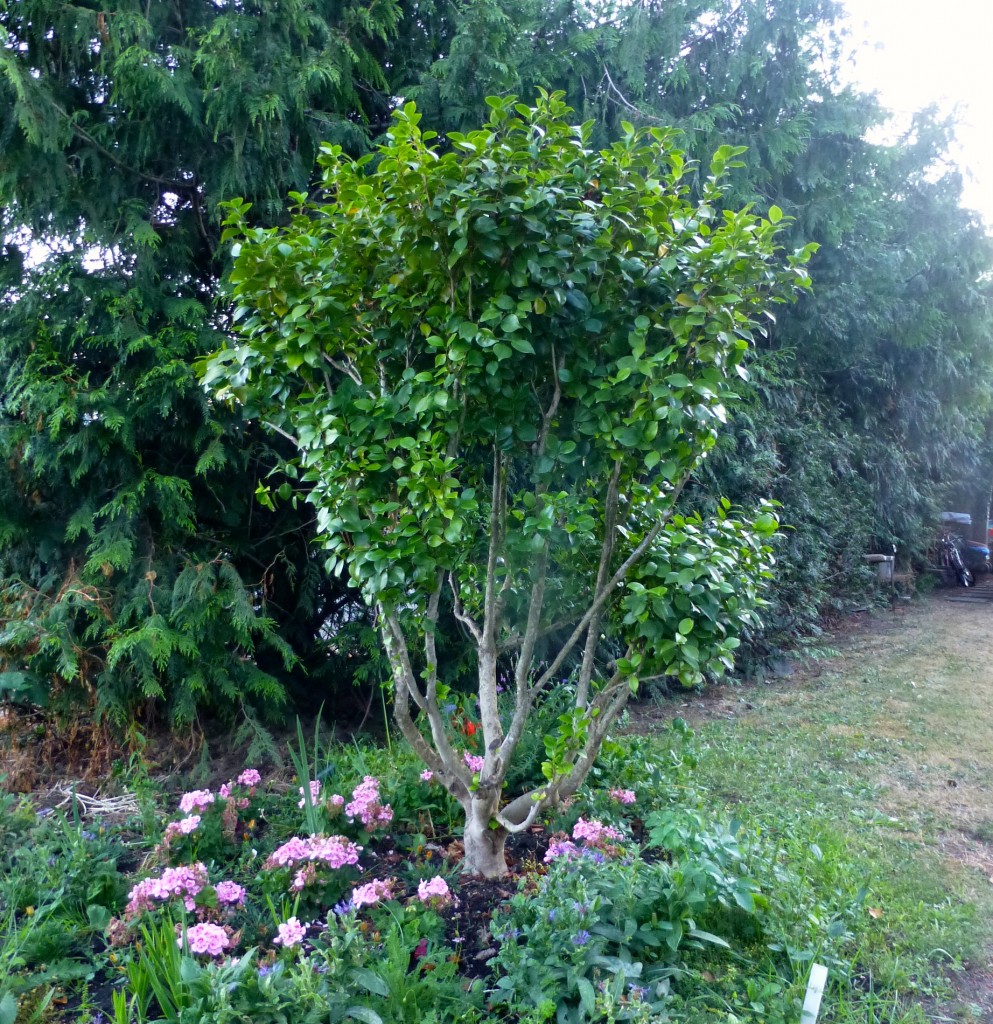 For the larger shrubs we needed a backhoe to excavate, so managed to gain the cooperation of a plant-loving backhoe operator who was scheduled to take down the house. He delicately scooped out the shrubs and gently placed them on the boulevard for us to take away at our leisure. The smaller ones could be moved with a dolly, but for that larger, including the Camellia with its 800-pound root ball, the aid of my long time police buddy Al Campbell and his front-end loader was needed.
For the larger shrubs we needed a backhoe to excavate, so managed to gain the cooperation of a plant-loving backhoe operator who was scheduled to take down the house. He delicately scooped out the shrubs and gently placed them on the boulevard for us to take away at our leisure. The smaller ones could be moved with a dolly, but for that larger, including the Camellia with its 800-pound root ball, the aid of my long time police buddy Al Campbell and his front-end loader was needed.
After digging a 5 X 5 X 5 hole in our front yard, Al picked up the shrub and dropped it with nary a hitch. The shrub was oriented in a shaded spot very similar to that from which it came and when it woke from its long winter’s nap, it simply shook its leaves as if to say “Wow! That was some dream.” (Photo left). By the time the contractor began levelling the lot, Jim, Julie and I had moved many dozens of Adams plants, shrubs, bulbs and small trees to new locations. All have not only survived, they have thrived.
And so this was the end of the original intent of this post, but after learning a little more about Adam’s life, I was inspired to learn more about this caring and gentle man whose life work as a botanist and activist in the field, made the world a better place. Clearly, there was much I didn’t know about a life that stretched back over nine decades than that which existed on a small patch of land in the Royal Oak area of West Sannich.
3. A Small World: The RBCM I am waiting for Bjorn Simonsen to proof this section when he returns from a current field trip.
I always knew a close family friend (who many of our extended family also know) was a mover and shaker in the development of the original Royal British Columbia Museum back in the late sixties and throughout the seventies. But, early in September when having coffee at the Oak Bay Marina with that friend, Bjorn Simonsen. the chat turned to Adam and the post I was writing. It turned out Bjorn knew Adam rather well as the two men were colleagues during the developmental years of the original British Columbia Provincial Museum. Bjorn, an archaeologist, spent over a decade in the 1970’s slogging away as he sought to gain for archaeology the recognition needed to better understand and preserve the long history and pre-history of British Columbia, particularly the native community with whom Bjorn has worked for the better part of fifty years (1).
During his tenure with government and after being appointed to the Office of the Provincial Archeologist (PAO), regulatory 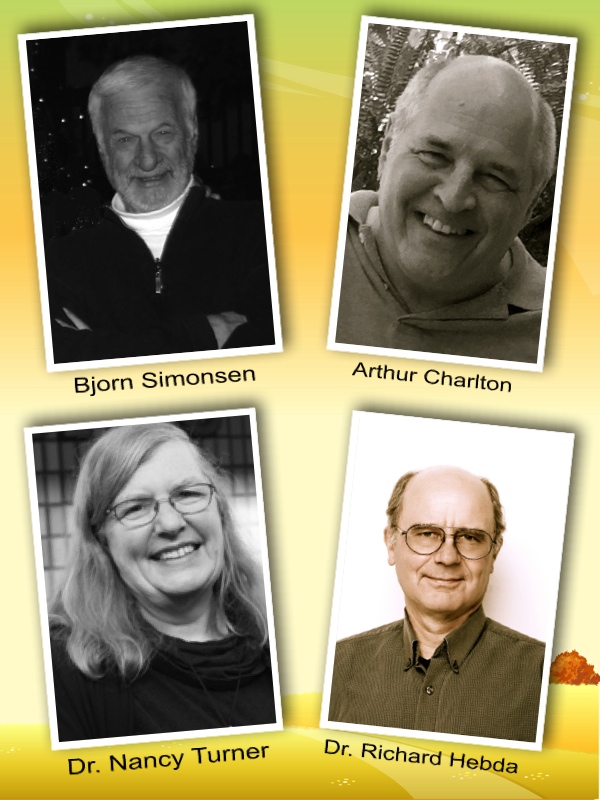 powers were expanded so that archaeology became much more than a discipline of academic interest only. After achieving the legislative backing, the PAO dedicated considerable time and energy to gain the funding needed to preserve the hundreds British Columbia historical sites that over the years were being systematically looted of thousands of treasured artifacts.
powers were expanded so that archaeology became much more than a discipline of academic interest only. After achieving the legislative backing, the PAO dedicated considerable time and energy to gain the funding needed to preserve the hundreds British Columbia historical sites that over the years were being systematically looted of thousands of treasured artifacts.
While Bjorn was working away in the Archaeological Branch, Adam was carrying on the same battle for Botanical interests, but Bjorn informed me that Adam, through his dogged determination and single-minded march towards the goals he had set, was a force to be reckoned with. Bjorn also named others who, in those early years, likewise set about building the groundwork for the amazing facility that now dominates the SE corner of Bellville and Government, the Royal British Columbia Museum.
Two of the others were, Art Charlton (2), and Dr. Richard Hebda (3), men who worked closely with Bjorn, Adam and others. In their younger years, Bjorn and Art completed post-graduate degrees in the Department of Archaeology at Simon Fraser University which, at that time, was at the leading at the leading edge of archaeological research in British Columbia.
Following his time working in the field, Art also spent time with the PAO, while Dr. Hebda went on to become Curator of Botany and Earth History at the Museum, the Branch in which Dr. Szczawinski was so deeply involved in developing. In addition to their wide range of collective interests, another key figure was Dr. Nancy Turner (4) a long time associate of Adam, who co-authored several books with Adam, including Common Poisonous Plants and Mushrooms of North America which Adam was working well into his retirement and was living next door in Royal Oak.
Following the connecting of these dots, I was able to locate articles about Adam which traced more of his life history. One article was posted on Canada.com and then another, written by Dr. Turner published in Davidsonia. The third was linked in a Web Site titled Descendants of Polish Squadrons (References in the footer). When the rest of the story began to emerge, it was not one I ever imagined when I first began to write this post. But, before delving into his earlier life, a bit more about Adam’s time at the Provincial Museum as outlined by Dr. Turner:
(Adam held) his position at the Provincial Museum until 1975, serving alongside Dr. Clifford Carl, Wilson Duff, Dr. Charlie Guiguet, Dr. Bristol Foster, and York Edwards, among others. During his time at the Museum, he served as Acting Director on many occasions. He also lectured widely throughout northwestern North America – sometimes speaking six or more times in a single week. He was in large measure responsible for the planning and implementation of the present Museum/Archives complex. Before this structure was built, the Museum was housed in the east wing of the Legislative Buildings.
Together with Dr. V. J. Krajina and others, he conceived and implemented the Ecological Reserves program in British Columbia, incurring considerable annoyance from politicians like Premier W.A.C. Bennett for his outspoken views on the importance of conserving representative ecosystems of the province. He also undertook extensive plant collecting in British Columbia and Yukon; most of his collections are housed at the Royal B.C. Museum herbarium (V) and at the University of British Columbia herbarium (UBC).
He helped to found Syesis, a research journal published by the Museum and was a founding member of the Canadian Botanical 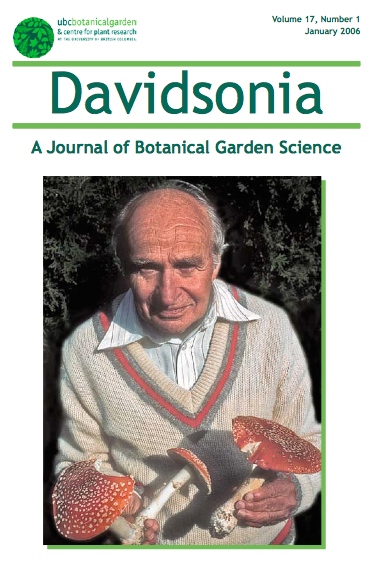 Association. He saw the Museum’s role in biological and ecological research as paramount and was a key developer and promoter of the Museum’s Handbook and Occasional Paper series. As well as recruiting authors for several of the handbooks (T.M.C. Taylor, Wilfred Schofield, Robert Scagel), he personally authored and co-authored several of Handbooks as well as co-authoring the Flora of the Saanich Peninsula (with A. S. Harrison).
Association. He saw the Museum’s role in biological and ecological research as paramount and was a key developer and promoter of the Museum’s Handbook and Occasional Paper series. As well as recruiting authors for several of the handbooks (T.M.C. Taylor, Wilfred Schofield, Robert Scagel), he personally authored and co-authored several of Handbooks as well as co-authoring the Flora of the Saanich Peninsula (with A. S. Harrison).
After his retirement in 1975, he continued to give many public lectures, especially on edible mushrooms and also co-authored five additional books: a set of four volumes on Edible Wild Plants of Canada (with N. J. Turner) and Common Poisonous Plants and Mushrooms of North America (with N. J. Turner).
Web Photo (edition not dated): During his years at the BC Museum, Dr. Szczawinski was often fondly referred to as the Mushroom Man, because of so many people requesting to see him while at his workplace at the BC Museum in order to get help identifying mushrooms. They either didn’t know his name or, perhaps didn’t how to pronounce it.
Another Davidsonia article provided background on Adam’s unrelenting push to see the B.C. Provincial Museum become a reality:
Szczawinski’s recommendation for a wilderness preserve caught the attention of the national media. Premier W.A.C. Bennett was not pleased; he sent a message through Dr. David B. Turner, Deputy Minister in the Department of Recreation and Conservation, and Clifford Carl for Szczawinski to stop opposing the government, or he would be dismissed.
Far from dampening Szczawinski’s enthusiasm, it challenged him to even more outspokenness. He told Carl, “Mr. Bennett is doing me a great favour by forcing me to get a better job.” He promptly contacted the media, and there were more headlines: “Provincial Botanist Muzzled by Premier.” Bennett, realizing that he could not intimidate Szczawinski, tried softer approaches, but, as Szczawinski recalled, “I said there’s nobody going to shut me up as far as conservation is concerned in the province. I was educated and my duty is to tell the government…”
Eventually, Mr. Bennett relented and invited Szczawinski to his office. There, he was very cordial and congratulated him on his dedication and on the wonderful job he was doing at the Museum. Not one to pass up an opportunity, Szczawinski seized the moment. “Museum? You call that a museum?” he said to Bennett. “Sir you know it’s about time British Columbia got out and had a proper museum!” Bennett, perhaps even further impressed by this audacity, assured him that he shouldn’t worry, that the government would do everything possible.
Later, in 1963, Szczawinski was invited to a government reception at the Empress Hotel. In the reception line, as Szczawinski approached the Premier to shake hands, Mr. Bennett said, “My friend, I have very good news for you. You are the first to know: We are going to build you a new museum!” Without hesitation, Szczawinski smiled and asked, “How big?” The Premier answered, “You tell us what you need and we’ll try to do it.
Thus, the dream of a new museum came to be a reality. It was opened officially by Premier W.A.C. Bennett on August 16, 1968. Its curatorial tower featured two floors dedicated to botany, including a large, modern herbarium to house the rapidly growing plant collection.” (Link to Source: Descendants of Polish Squadrons)
The Rest of the Story continues after these footnotes.
Footnotes
(i) Bjorn Simonsen: Bjorn has 40 years of experience as a professional archaeologist. He spent 10 years in the public sector, as the Provincial Archaeologist for BC. For the past (30) years, he has been an independent consultant involved in all aspects of heritage resource management and planning. This has included policy and program development; program evaluation; museum planning and exhibit research and design; heritage impact assessment; archaeological investigations; and community-based heritage program development on behalf of First Nations.
(2) Art Charlton: After spending several years with the Government working in the field of archaeology and at one time appointed as Provincial Archaeologist, Art, as with Bjorn, branched into consulting. His M.A. thesis involved excavation of the Balcarra Site “that focused on the later prehistory of the Strait of Georgia, a poorly understood period between A.D. 400 and 1200 and stands today as an important transitional study tracing the pre-history of Native Settlements in B.C. Sadly, Art passed away suddenly on September 1, 2015.
(3) Dr. Richard Hebda: Curator of botany and earth history at the Royal British Columbia Museum and the co-author of Saanich Ethnobotany. Richard Hebda has been with the Royal BC Museum since 1980, and Curator of Botany and Earth History since 1986. Since 1984 he has also held a faculty position at the University of Victoria’s School of Earth and Ocean Sciences. His PhD in botany is from the University of British Columbia.
(4) Dr. Nancy Turner: Distinguished Professor and Hakai Professor in Ethnoecology, Nancy Turner is an ethnobotanist whose research integrates the fields of botany and ecology with anthropology, geography and linguistics, among others. She is interested in the traditional knowledge systems and traditional land and resource management systems of Indigenous Peoples, particularly in western Canada.
(5) There is an EndNote on this post which links a few more connections in this small world in which we live.
4. Dr. Adam Szczawinski: The Rest of the Story
Born 1913 baby Adam was welcomed into a middle-class home in Lwow, Poland, where his father managed an estate and was a forester by training. With the freedom to choose and abundant educational opportunities, Adam seized every chance throughout his early life to take on new challenges including earning a PhD in Botany at the University of Lwow (1). In her biography, Dr. Turner captured the essence of the young Adam:
His maternal grandmother, Mrs. Pluchtnyak, who rode horses until she was in her 80s, especially influenced him as a child. When he turned 12, Adam was given his own horse, Cashtanka (“horse chestnut”) as a birthday present from his father. He used to ride far into the forest by himself, through the beech woods, on Cashtanka. One day, he encountered an old woman who was considered the village witch. She was collecting fly agaric mushrooms, and she made Adam climb down from his horse so she could tell his fortune.
She wrapped the skin of the mushroom cap on her forehead and her tongue, and then she went into a trance. She held his hand and said, “Oh! I see big fire, huge fire, and you are running away. And you go through the water, plenty water! And the other side, and you are safe there. And then the big war started. You were on the other side, and then you were safe.” Adam recounted this story to me in 2002. He laughed at the old woman then, but remarked in hindsight, “More or less, in a few years, I found out that she was right!”. Adam attended the University of Lwow (1) from 1932 to 1937, where he studied botany and medicine. In 1936, he became a lecturer in biology at the Commercial College in Lwow, and in 1937, an instructor at the University of Lwow.”
Given Adam’s family history, it is easy to see why he choose a life path that propelled him towards the study of botany. But, just as he was getting started, his bright and peaceful future came to a crashing halt in 1939. In that year the Second World War began, a hate-filled war that led Adam to family tragedy, escapes filled with danger, service in the Polish Underground and then Air Force, a promotion and service with the British RAF and, finally, to redemption in the form of a new love and new country, a second PhD, again in Botany, but this time at UBC, and finally a fulfilling career studying the plant species on Vancouver Island and Western North America. Adam’s story is the story of an extraordinary man who overcame the adversity brought on by bigotry, racism, and hatred. Adam, as you might have guessed by the name,, was a Polish Jew.
In the dark days of 1939, Adam managed to escape Russians in his section of occupied Poland, but his freedom was short lived when in 1940 he was then captured by the Gestapo in Hungary and thrown into a concentration camp near Budapest. The life expectancy of Polish Jews at the time was very short indeed and although Adam faced immense odds against his survival, a relentless determination that obviously stuck with him throughout his life, helped him to escape and reach France. He immediately joined the free Polish Air Force, but a short time later when Germans overran France, he and his squadron were forced to make a harrowing escape to Britain (2) where they would spend the remainder of the war.
Dr. Turner continues:
Arriving in Great Britain by perilous convoy from France (2), he served as Director of Education, at the Polish Air Force Headquarters in London from 1944 to 1946. He was promoted to the rank of Flight Lieutenant, in the Royal Air Force in 1946. He fell in love with and married Mary, his beautiful Scottish wife, (Mary M. McAlpine) and together they emigrated to Canada in 1948.
After an unsuccessful effort at farming on Lulu Island – potatoes, strawberries, and cut flowers – and a somewhat disastrous time as a boiler fireman for Aylmer’s fruit and vegetable cannery, he decided to go back to university. With the support of many, especially Czech forest ecologist Dr. Vladimir Krajina, he received his Ph.D. through the Department of Botany, at the University of British Columbia, in 1953. He was UBC’s first PhD recipient in botany.
His doctoral research was undertaken in the Nanaimo River Valley (Nanaimo Lakes area), where he salvaged canopy lichens from the Old Growth trees that were being logged. He stayed for long periods of time in isolation while he did his fieldwork, and recalled once or twice seeing a large cougar crouched in a tree over his head when he went down to get water from the creek. His thesis was entitled Corticolous and lignicolous plant communities in the forest associations of the Douglas-fir forest on Vancouver Island. As a graduate student, he and Mary struggled to make ends meet, and they were often helped out by Professor Krajina and other kindly individuals.
After completing his PhD, he remained as a lecturer in the Department of Botany at UBC until 1955, when he took the position as Curator of Botany and Head of the Botany Division at the British Columbia Provincial Museum [now Royal British Columbia Museum] in Victoria. Mary gave birth to their only child, their son Alan, in 1956. Tragically, in 1968, when Alan was only 12 years old, Mary died suddenly from a heart attack; Adam never remarried.
This brings us to the present day where this post began in West Saanich. Clearly many of the specifics of Adam’s earlier life were not documented in the posted articles, but one only needs to look at what was happening around him during the 30’s and 40’s to see that because the Jewish race and religion were seen to be a blight on mankind, Adam and hundreds of thousands of others were forced to flee their home and country or be killed. We have all watched that happen in other parts of the world at one time or another, but never on the scale that happened in the 1930’s and 40’s in Europe. It was the greatest mass movement of refugees the likes of which the world had never before experienced.
Today as we watch the flood of refugees seeking to escape the war zones and crisis in the Middle East, we are again forced to confront the bigotry, racism and hatred that is standing in the way of our helping innocent people simply because they are of a different race, have different customs and from a different theist belief stream. How is it possible we can so easily forget what happened a mere 70 – 80 years ago knowing full well what happened then involved the grandparents and great-grandparents of many who now call Canada home. Adam was just one of those people who escaped and although we know that which was done to Adam and his Polish family was wrong, we continue along a similar path today knowing that bigotry, racism, and hatred bring nothing but more pain and suffering to all concerned. More will be said on this subject in the next section “Least We Forget.”
Footnotes
(1) Massacre of Lviv University Professors: In 1941, 25 Polish Academics and their families from the University of Lwow were executed by Nazi Occupation Forces with the hope that that the killing of prominent members of the community would weaken the Polish Resistance Movement. As Adam had completed his post-graduate studies at Lwow University between 1932-1937, and in 1937 became a teacher at the University, he would no doubt have been a close associate and friend to many who were killed. A reference is made in another Davidsonia article that Adam was a member of the Polish Resistance Movement before he fled Poland. (For the full background on the subject of these murders as well as a list lot all those killed — Link Here)
(2) In another Davidsonia account of Adam’s time in France, it is suggested he was captured by the Germans but later escaped to Britain. Which story is correct, I don’t know, but it makes little difference as Adam dodged so many bullets after the invasion of Poland, his survival might well be considered a miracle.
5. Least We Forget: Concluding Comments
In Canada, November 11th is set aside to remember Canadian soldiers who died during the First and Second World Wars, men and women who died in order to help make Canada and the world a better place. We justifiably make a big deal of remembering that terrible time in world history, not only because so many innocent people died, but because we wish to remember why it is we need to do better in the present. Let’s travel back to Adam’s world in 1939.
Following the German and Russian occupation of Poland and in the early years of the war, the city of Lwow became home to the largest Jewish Ghetto in occupied Europe, a home that, in the final days of 1941, held upwards of 220,000 Jewish people in 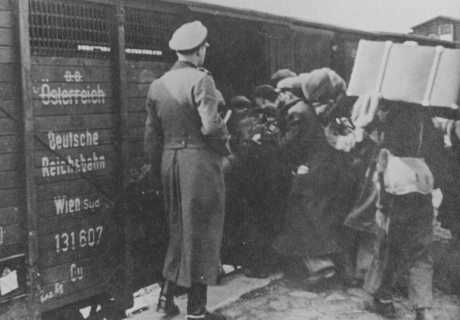 extreme deprivation. By 1943 all who had not died of disease or starvation, or were summarily executed on site, were hauled away in cattle cars to certain death in the gothic horror that was the Bełżec Extermination Camp. Out of an original Jewish population of 110,000 in and around Lwow, it is reported that only 200 to 800 survived. I have no firsthand information as to what became of Adams family and friends (other than the University Professors and their families), but in the absence of definitive information to the contrary, it seems likely some or all of them met a tragic end.
extreme deprivation. By 1943 all who had not died of disease or starvation, or were summarily executed on site, were hauled away in cattle cars to certain death in the gothic horror that was the Bełżec Extermination Camp. Out of an original Jewish population of 110,000 in and around Lwow, it is reported that only 200 to 800 survived. I have no firsthand information as to what became of Adams family and friends (other than the University Professors and their families), but in the absence of definitive information to the contrary, it seems likely some or all of them met a tragic end.
The attempt to eradicate an entire race and religion during the Second World War is certainly not unique over the past 100 years, but the depths to which Germany, an overwhelmingly Christian country fell during the 30’s and 40’s would be hard to match at any time in world history, although Russia probably came close. While the Holocaust lead to the deaths of an estimated 6,000,ooo Jews, a further 5,500,000 “Romanis, ethnic Poles and other Slavs, Soviet POWs, communists, homosexuals, Jehovah’s Witnesses and the mentally and physically disabled” all felt the wrath of that hatred (i). But, when talking about killing large numbers, whether it is two hundred or 20 million, the cause will usually be traced to bigotry, racism and hatred directed towards specific groups.
Looking at the above photograph of Jews in Poland being loaded into cattle cars, you can certainly see similarities to that which is happening in the world today when many refugees are being treated worse than cattle in a feed lot. At least cattle in a feed lot are usually given food and water. Why is this happening? Because bigotry, racism and hatred is being directed towards the 1.57 billion people who consider themselves Muslim even though we know the vast percentage of those people are no more prone to violence than are Christians, Jews or any other group, yet they are all lumped in the same basket. It is a tragic indictment of all who claim to be caring Christians, Jews and yes, Muslims who hate other Muslims, that many will stand back and just let this happen. Now, think for a moment how it can be different.
Germany, a Christian nation, is taking the lead in trying to deal with the rapidly escalating refugee crisis and one cannot help but admire the German Government and people for their selfless effort in trying to bring some sanity to a humanitarian disaster of immense proportions. The same cannot be said for many other countries in Europe, Canada and elsewhere who have largely turned a blind eye to the crisis. You can be sure bigotry and racism play a big role in the decision to just ‘stand-by’ as “we” have been told “those people” are dangerous and in Canada, that message has been preached for the past decade and is an election issue as I draft this post.
Our response, send six CF-18 fighter jet fighters and a hand handful of the military to confront a dangerous, deprived group called ISIS who have killed perhaps 1,500 people over the past few years in a lawless land where tens of thousands have been killed. As well, the government has crafted a handful of anti-terror bills to combat the ‘growing problem’ at home because so-called terrorists have killed two or three people in the past twenty years. All those words and actions is just window dressing designed to make it appear Canada is a leader in the fight against terrorism. Now, think back to Canada in an earlier time.
In Adam’s dash to freedom from his home in Poland, he faced almost certain death on many occasions and, later, had to face down the bigotry and racism the Jewish people endured in the last century. I don’t have direct information, but it seems likely Adam and his Scottish bride were among the thousands of refugees taken into Canada in 1948, a time when the population of Canada was a mere 11 million. Today Canada struggles to take in a few hundred when our population is 33,000,000 and our resource base is exponentially higher than it was in 1948.
his Scottish bride were among the thousands of refugees taken into Canada in 1948, a time when the population of Canada was a mere 11 million. Today Canada struggles to take in a few hundred when our population is 33,000,000 and our resource base is exponentially higher than it was in 1948.
Web Source (PDF screen shot): Canada Accepts Jews (double clip to open)
While the acceptance of something in the order of 180,000 refugees, including some 7,000 Jews, into Canada, was significant, resistance to that influx remained high. Never-the-less our country was able to dig deep to overcome the bigotry and hatred directed towards the Jewish people and others considered less than deserving of a place in Canada.
Strangely, all those people accepted into Canada after the war will now be the grandparents and great-grandparents of those living today and who make up the mosaic that is Canada. Yet many of those who are now second and third generation will be among those railing against accepting immigrants and refugees. This includes members of my own extended family. Ah, but the new threats to the world are no longer the Chinese, the Japanese, the Germans or the Jews, as those groups have all been replaced by Muslims. Is it possible for Canada overcome bigotry, racism and hatred in order to again achieve a level of compassion needed to help? Who knows.
Only time will tell if extremists, be they Christians, Muslims or Jews, and to be clear it is the extremist segment only, will one day be pushed aside by the peaceful mainstream or whether, through bigotry and racism, those extremists will be given a podium on which to spread their hate. In the meantime, as we dither, millions of innocent people have been caught in the pincers of war as happened in Adam’s Poland in the last century, is happening in Syria and other Middle East countries today and as has happened in other countries around the world throughout the intervening years (2).
I won’t pretend to have a lasting solution to the many conflicts that currently exist, but I do know that Canada, along with the hundreds of ‘rich’ and relatively peaceful countries sprinkled around the globe have an obligation to use their good will and a good part of their resource base to help those who struggle to scratch out an existence in the most horrendous conditions. To stand by and watch while hoping for the best is not an option.
Part of Adam’s story is presented here as a reminder of the strife endured by many who fled to Canada over the past 200 years. We are a nation built by immigrants and refugees for immigrants and refugees, so we have an obligation to help.. Adams story is being developed here an example of how the world becomes a better place when bigotry and racism is set aside and the down trodden welcomed.
Footnotes.
(1) In the nearly fifteen decades since Confederation, Canada has experienced many threats to national security, yet, during that fifteen decades, the past seven have been the most peaceful in our history. Clearly the greatest threat we and the world faced in the past 150 years, was the advance of the German Military in Europe and the Japanese Imperial Forces in the Pacific during World War II. Those two nations developed the most fearsome fighting forces of all time and although they were finally defeated by a massive allied effort, victory was by no means a given. Had it not been for a megalomaniacal leaders and their immediate followers thinking their forces were invincible, and thinking that people in the countries they overran could be controlled by brutal repression, they might well have succeeded. All other threats to world peace, both before and after that war, have paled by comparison.
(2) As dangerous and brutal as organizations like the Taliban, ISIS, other splinter groups and various dictators may be, the destruction they bring pales in comparison to the wartime forces of Germany and Japan, followed by Russia during in Stalinist years. Terrorists and dictators can only survive and thrive in countries were civil society has disintegrated and the rule of law extinguished. While they can do considerable local damage, their ability to gain the widespread support needed to achieve their delusional goals, is limited. Many nations buy into their tactics by spreading fear of terrorists for political and ideological ends as is happening in many countries around the world in the current day. Unfortunately, this has the effect of greatly damaging innocent people such as the refugees from Syria and surrounding countries who are caught in the cross-fire.
References
Descendants of Polish Squadrons: Several articles from Davidsonia provides the most comprehensive background on Dr. Adam Szczawinski that I was able to find on the Web. In reading through the various versions of his past there are a number of conflicting bits of information, but these conflicts are insignificant in the overall documentation of his life. On a lighter note, during his time at the RBCM, Adam was known as the “mushroom man” whenever people called to speak to him. Others, including Bjorn, also noted Adam was a colourful character who was fond of driving a powerful hotrod that was maintained in his garage until the day he died.
Davidsonia Article: Adam F. Szczawinski, A Botanical Pioneer in British Columbia. Adapted from article by Dr. Nancy J. Turner, CM, OBC, PhD, FRSC, FLS, Dr. Turner is a distinguished Professor of Environmental Studies at the University of Victoria in British Columbia (Link):
Canada.com Botanist helped B.C. museum bloom
Times Colonist, Obituary June 9 to June 10, 2006
Publications: Adam F. Szczawinski
Bandoni, R.J. and A. F. Szczawinski. 1976.
Mushrooms of British Columbia. British Columbia Provincial Museum Handbook Number 24, Victoria.
Szczawinski, A. F. 1959.
The Orchids of British Columbia. British Columbia Provincial Museum Handbook Number 16, Victoria.
Szczawinski, A. F. 1962.
The Heather Family (Ericaceae) of British Columbia. British Columbia Provincial Museum Handbook Number 19, Victoria.
Szczawinski, A. F. & G.A. Hardy. 1975.
Guide to Common Edible Plants of British Columbia. British Columbia Provincial Museum Handbook Number 20, Victoria.
Szczawinski, A. F. & G.A. Hardy. 1975.
Guide to Common Edible Plants of British Columbia. British Columbia Provincial Museum Handbook Number 20, Victoria.
Szczawinski, A. F. & A. S. Harrison. 1973.
Flora of the Saanich Peninsula. Occasional Papers of the British Columbia Provincial Museum No. 16
Szczawinski, Adam F. & Nancy J. Turner. 1978.
Edible Garden Weeds of Canada. Edible Wild Plants of Canada No. 1. National Museum of Natural Sciences, National Museums of Canada, Ottawa.
Szczawinski, Adam F. & Nancy J. Turner. 1980.
Wild Green Vegetables of Canada. Edible Wild Plants of Canada No. 4. National Museum of Natural Sciences, National Museums of Canada, Ottawa.
Turner, Nancy J. & Adam F. Szczawinski. 1979.
Edible Wild Fruits and Nuts of Canada. Edible Wild Plants of Canada No. 3. National Museum of Natural Sciences, National Museums of Canada, Ottawa.
Turner, Nancy J. & Adam F. Szczawinski. 1978.
Wild Coffee and Tea Substitutes of Canada. Edible Wild Plants of Canada No. 2. National Museum of Natural Sciences, National Museums of Canada, Ottawa.
Turner, Nancy J. & Adam F. Szczawinski. 1991.
Common Poisonous Plants and Mushrooms of North America. Timber Press, Portland, Oregon. (Paperback edition published in February 1995) [American Library Association awards: Outstanding Reference Source 1991; and Outstanding Academic Books and Nonprint Materials 1991, from Choice magazine, the journal of academic libraries.]
End Note: More on the Small World in which we live.
Art Charlton and his wife Alan, along with Bjorn, Linda, Lynn and I and our severn children (Ben, Kevin – Charlton; Erika, Kia (Simonsen); and, Jay, Kari and Christine – McNeill) often partied together during those early years. One notable event was getting together to enter Lip Sync Contests at local dances. Our all time favourite was our Blue Tones rendition of “Get a Job” for which I shall soon be posting the photos for the Charlton family as, sadly, Art passed away suddenly on September 1, this year. Art, Alana and their family lived only a stones throw from the Oak Bay Police office were Lynn and I worked.
A continuation of previously unknown connections to our small world occurred September 28, 2015, while Lynn and I were visiting the kids in Kamloops. When the subject of this post came up in a discussion with our son-in-law Chris LeClair (a geologist) and his father Ron LeClair, Ron mentioned he was a colleague of both Bjorn Simonsen and Art Charlton as all three attended post-graduate studies at SFU. Ron had worked the Balcarra dig with Art Charlton and it was Art who encouraged Ron to apply to the SFU post-grad program. There is no direct connection to Adam, but the connection shows how small the world can be when searching for connections between people with diverse backgrounds. People of the earth are one family.
End Note 2 October 4, 2015. The following information on another part of the Szczawinski family was located through a photo search on the web. It is unknown if this family was related to Adam’s, but it certainly seems possible as this story relates to very similar circumstances that Adam’s family faced in Easter Poland: (Link to Source: The Szczawinski Family
Before the Second World War, 60 percent of the population of Ostroh, a town by the Russian border on the Horyn River, was comprised of Jews. When the Nazi occupation began, a ghetto for the Jews was set up. In 1942, the liquidation of the ghetto begun. The whole of Ostroh were able to hear the sound of executions carried out on a meadow by the forest. At that time, the Szczawiński family was visited by some acquaintances: Samuel Klepacz, a carpenter who had laid the floor and built a porch at Szczawińskis’ house, together with his fiancée Sima Rozliwkier. They stayed until the liberation in 1944.
The only person to know about the Jews’ presence was Eugenia Szczawińska and her three children: Antonina, Edward, and Adam Tadeusz. The remaining four siblings had no idea of what was hidden in the unfinished part of the house that served as a barn. A Russian soldier, temporarily staying at the house, didn’t know either, and even Mr. Antoni Szczawiński didn’t know.
“Daddy was a manager at a workshop where Germans would come and order stuff. So, if they had a drink together, he might have accidentally said something and we would have had a search of the house.”
The shelter under the barn floor was dug by Samuel and Antonina’s brothers, while she was on the watch. Later, she brought food, water, towels and soap, washed the bed linen and clothes, and removed the waste. Samuel and Sima could only leave the hideout for a short amount of time every couple of nights. They spent nearly two years in hiding and their health suffered a lot. They both had rheumatism, and Sima nearly lost her sight.
For two months they were accompanied in the shelter by Lina Nusinow. He was a twelve-year-old boy who had previously been hiding in a ravine with his parents. Exhausted physically and mentally, he died of pneumonia and was buried in the Szczawińskis’ orchard.
After the war Sima and Samuel married and left for Israel shortly after. Antonina, aside from taking care of the house and children, also repaired stockings, and worked as a culture and education instructor, a boarding house tutor, and a mangle operator. She lives with her husband in Warsaw.
(854)
New Years Eve 2013: Brentwood Inn
New Years Eve: Esther and Garth, Harold and Lynn ready to head out.
It is truly a joy when the kids volunteer to stay home and let the old folks head out for a night on the town on New Years Eve. Of course the kids gave us a stern warning about “drinking and driving” and told us that if we felt we have had had to much, to just call home and one of the them would drive out to pick us up. Thank you to Jay and Jennifer, Kari and Grayson, Christine and Audrey for looking after things on the home front (Link Here). We will check in at the bewitching hour.
All the Best in the New Year, Mom, Dad, Garth and Esther
December 31, 2013: Brentwood Inn, Brentwood Bay, B.C.
As the hours and minutes ticked away towards midnight, Lucas J. Copplestone and Drew Betts continued to work their musical magic. It was not long before the entire Inn was rocking.
It was to be another New Years event where we met more of the parents of the kids you see in the photo below. It never ceases to amaze how inclusive these young people are. Over the years they are always encouraging their parents not only to attend, but to become fully involved whether it be a local events or on holidays to some other part of the world. Each is always anxious to introduce his or her parents to the parents of others as they are as proud of their parents as their parents are of them. Over the past several years it seems our family continues to grow in leaps and bounds.
Part of the younger side of the New Years 2013 Crew.
For a full set of New Years 2013 photos: Link Here
For a full set of New Years 2012 Photos: Link Here
(note: the 2012 photos are posted on my personal FB Page)
Other group celebrations from 2012
Purple Day Plane Pull: Link Here
Seaside Magazine Celebration: Link Here
New Orleans, Gulf of Mexico and the Caribbean includes several albums: Link Here
A Celebration at Zajac Ranch includes several albums: Link Here
Of course, there were a good many other celebrations and destinations in 2013, many of which is posted on the McNeill Life Stories Facebook Page and on this Blog
(1078)
The Grayson Chronicles: The Journey Begins
This Book is Now Available On Amazon

Photo (2012): Grayson gazes out over the North Thompson River and the
mountains beyond: “Grandpa, we need to go see what’s beyond those mountains.”
(Cover Photo Arrangement by Alysha McNeill)
Link to KDP Book (make sure you order on the January 4, 2025 edition)
Dear Reader,
The following chronicles were written during the magical summer of 2012 when five-year old Grayson Edward Walker, along with his Grandpa, Harold David McNeill, his brother, Jay Wesley McNeill and a close family friend, Bjorn Oscar Simonsen (Uncle Bjorn) completed an exploratory expedition through British Columbia, Alberta and Saskatchewan. While the trip through British Columbia was relatively peaceful, once they hit the Alberta border, they entered a new and perilous world. After visiting family and friends across the Province they hit out for Saskatchewan to visit the places where Grandpa was born and where Uncle Bjorn and his family first landed when they emmigrated to Canada from Norway in the early 1950s. In this Province they would again be faced with many hurdles as they visited the many farms and historic sites that were part of the family history.
The 200 page book is filled with dozes of full colour photographs of family, friends, events and special places in the lives of the intrepid explorers. Dozens of Chapters are written from the perspective of Grayson.
Cheers,
Harold, Grayson, Jay, and Bjorn
Contact Harold at: lowerislandsoccer@shaw.ca
FOR MORE PHOTOS OF BEAVER BOARDWALK: LINK HERE
FOR MORE PHOTOS OF AUNT PAT’S BIRTHDAY: LINK HERE
COMMENTS ON THE STORY CAN BE MADE ON THE MCNEILL LIFE STORIES FACEBOOK PAGE
(2162)
Camping Close to Home 2012, Inaugural Edition
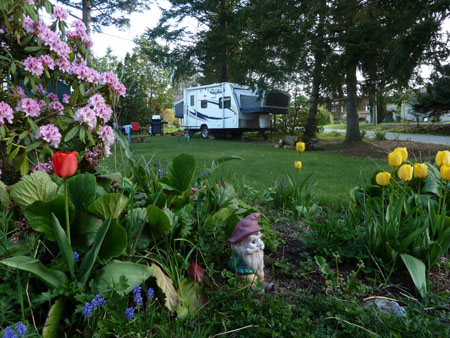
View across the front yard of Leney Place. The story of the Gnome is posted in a footer.
It only took four guys, three chain saws, one chipper, two hours and a bit of bush whacking, to clear a spot as close to home as we could get for our first “Camping Close to Home” experience of the 2012 season. While driveway camping is “ok”, it just doesn’t feel the same as being surrounded by trees and a bit of grass especially when you look out from your bed at night. It struck me this spring that I could do better than the driveway, so checked out the angles, trees and shrubs to find the best use of our smaller property.
After two days work this past week, the trailer was moved in, fireplace set up, BBQ moved from the back deck and we were ‘good to go’ for our first BBQ of the season.
As those who live in Victoria know, this week-end really kicked in the feeling that summer is finally on its way. Along with our friends Linda, Bjorn, Sandy and Ron (Sandy and Ron over for the week-end from the Lower Mainland to visit the Island Boat Show in the Inner Harbour), we settled in for an evening of wine tasting, hamburgers, potato salad and corn on the cob. Given the weather we have had over the past few months, it was a treat to sit outside by the fire without feeling one was going to develop hypothermia with those frigid winds blowing in off the water.
(454)
Holland America Cruise Ship Docking in Las Vegas? You Bet Your Booties.

Photo: Holland America was the first cruise ship company to take a crack at the lucrative Las Vegas market with planned trips by the newly refurbised MS Westerdam this coming fall. This was made possible by building a giant canal from San Diego to the heart of the strip in Sin City. As with the Panama Canal this was a major undertaking that will surely become a big hit with the cruise companies. When they complete the planned extension to Louisiana and the Gulf of Mexico in 2018, it will add a whole new dimension to the world of crusing.
Hello Friends and Friends of Friends.
A short description of the various stops and photographs from this
amazing adventure are now posted below.
(Scroll to “Narrative and Photo Gallery Links” Below)
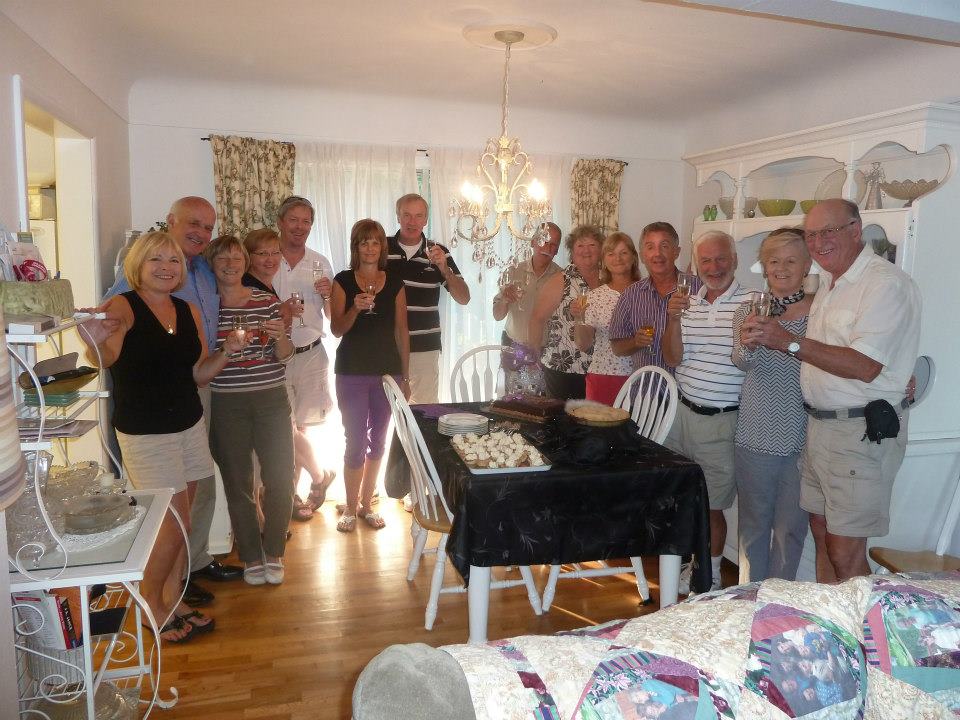 L
L
Left to Right: Anne, Herb, Lynn, Esther, Garth, Patty, Doug, Ron, Sandy,
Gloria, Jim, Bjorn, Linda, Harold (Absent while on leave for a cruise
through the Canadian Rockies, Roslie and John, Lib and Larry)
For the full set of pictures of the Viva Las Vegas pre cruise party held at the McNeill’s
on September 16, 2012. LINK HERE
Looking for a little adventure? Thinking you might like to extend this coming summer by almost two weeks at the beginning of October? Well, think no more.
Join these fun loving couples: Esther and Garth Dunn, Patty and Doug Cassels, Linda and Bjorn Simonsen, Ann Skelcher and Herb Craig, Sandy and Ron Hall, Gloria and Jim Arnott, Lib and Larry Lohr, Roslie and John Gold (welcome Visitors from Australia), Lynn and Harold McNeill, as they climb aboard the recently renovated MS Westerdam for an historic cruise that will take us from Vancouver to San Diego (with a brief stop in Astoria, Oregon), then on to Las Vegas for our final 3 nights.
This 10 night package includes 4 nights cruising, hotels in San Diego (3 nights) and Las Vegas (3 nights), transfers, and flights from San Diego to Las Vegas and return to Vancouver.
Itinerary
30 September: Sail from Vancouver at 4:45 pm
1 October: Astoria, Oregon
2/3 October: At Sea
4-6 October: San Diego
7 October: Fly from San Diego to Las Vega
7-9 October: Las Vegas
10 October: Fly from Las Vegas to Vancouver
We will be staying at the Holiday Inn on the Bay in San Diego and the Excalibur ($10 more) in Las Vegas, (The Luxor and Harrahs are two alternate options you may choose from with this package for no additional charge).
Package price begins at $839.00 for an inside cabin (under $1200 with all taxes and fees) – based on double occupancy (other stateroom categories, as well as single and quad rates, are also available).
Patty and Doug have taken advantage of similar re-positioning cruises before and have found them to be of excellent value, with a great itinerary.
If you would like to join with us this fall for 11 days of fun and laughter, please contact Lynn as soon as possible. (With such a great deal, space is limited, – several other itineraries have already ‘Sold Out’.) $250 per person deposit is required to hold your space- refundable up to 90 days before departure.
Contact Lynn by phone, email or Facebook
Office:250 656-5441 Email: lynnmcneill@cruiseshipcenters.com
Harold Contact: harold@mcneillifestories.com
September 17, 2012: Special Bookings:
World Premier of the Musical “Allegiance” a new American Musical at the Old Globe Theatre in San Diego.
(1515)
A Predictable Accident?
Above: Queen of the North en route through the Inside Passage on the West Coast of Canada. Having traveled on dozens of Cruise ships of various size, as well as hundreds of trips on BC Ferries including an occasional trip on the Queen of the North through the inside passage, I am amazed there are not more accidents given the oceans of the world can produce extremely challenging situations. The loss of that classic ship, the Queen of the North is just one more example of how things can go catastrophically within the blink of an eye.
Note: It appears that on occasion when making a simple one-word change, a whole paragraph can be replicated. I have not yet determined why this takes place, so please bear with me when this happens. Harold
Of the special items on the Queen of the North were several large murals that decorated the walls along the passageways. Photos, depicting various historical sites along the route, were accompanied by a written history of each site and surrounding area. The murals and stories were prepared under the direction of a long-time friend and former BC Provincial Archeologist, Bjorn Simonson. My wife, Lynn McNeill assisted in the preparation. As this work was completed perhaps a decade before the sinking, I don’t know if they were still being displayed when the Queen of the North sank on that fateful day in 2006.
(Activity: May 1, 2017 – 2712)
Follow-up News Reports, June 2013
Karl Lilgert, the navigating officer on the ill-fated Queen of the North, leaves the court after being found guilty of Criminal Negligence Causing Death. His being sentenced to four years in a Federal Penitentiary very much surprised me (see comments near the end of this post relating to the essential elements of a Criminal Negligence charge). I have no doubt the constant stream of inflammatory media reports as well as the vicious presentation by the Crown, had a strong influence on the jury.
to four years in a Federal Penitentiary very much surprised me (see comments near the end of this post relating to the essential elements of a Criminal Negligence charge). I have no doubt the constant stream of inflammatory media reports as well as the vicious presentation by the Crown, had a strong influence on the jury.
During my thirty-year police career, experience taught me that convicting someone on a charge of Criminal Negligence Causing Death was a particularly onerous task. As discussed further on in this article, each element of that particular statute presents a very real challenge for the investigators and crown.
In particular, I have been involved in other cases where the “wanton and reckless” disregard for life was considerably more egregious than in the Lilgert case, yet his case ended with a conviction. In my opinion, it was a stretch to have found each of the elements of the charge were proven in his case. I would be very surprised if either the charge or the sentence, perhaps both, were not tossed out on appeal.
Harold
(3039)

